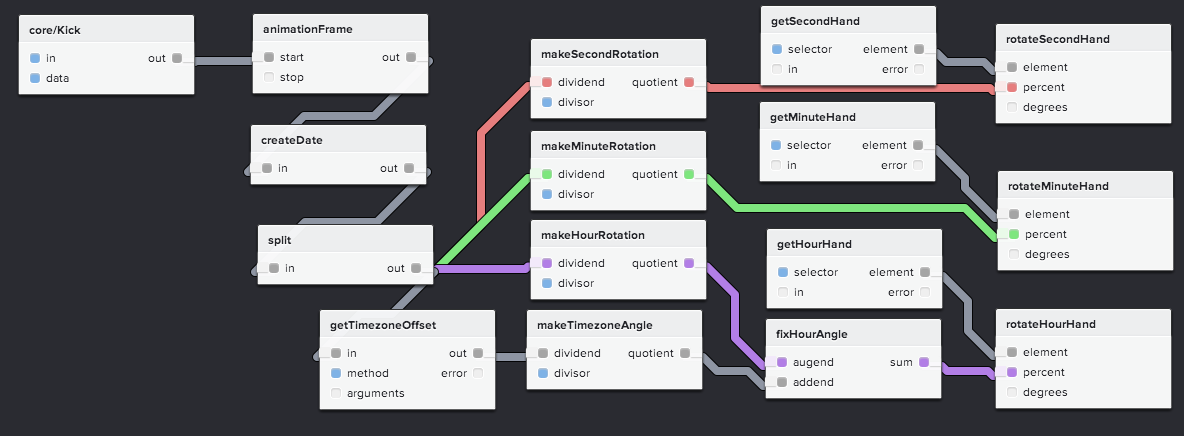Flow Toward Maintainability
The more complex your code, the more trouble you (or other hapless souls) will have maintaining or enhancing it. This is especially important for open source software. Sometimes we pride ourselves on complexity and some shameless developers parley it into job security. But while we can make complex systems, we should make the inner components of that system as simple as possible.
Certain design and testing methodologies can guide developers to create smaller, less complex components. Flow-based Programming (FBP) seems to encourage organized, maintainable applications. Especially for modern web applications where we inter-connect disparate systems, “design by contract” makes sense.

Take the clock example from NoFlo: most experienced front-end developers can recreate this widget and you can find several tutorials by searching the interwebs. I decided to follow the NoFlo design to write a clock application using SVG and the minimum of HTML markup. I wanted to see if following the design like a road map helped me make a more maintainable application.
I was quite pleased with the resulting maintainability score of 135, which beat similar tutorials by at least 15 points. I made sure I was on the right track during development by using the grunt-complexity task in my build step. I also wanted to explain my implementation, so I used Docco to comment the code.
Note: since my normal TDD practices often steer code quality, I did this development without tests to make sure that only the FBP map guided my decisions. Hence, the project has no tests.
See the project: https://github.com/AutoSponge/svg-clock